Posted on April 13th, 2020 by Mary Lord
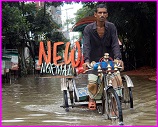 As storms increase in frequency and fury and droughts drain groundwater and invite wildfires, communities nationwide are taking a hard look at whether their infrastructure, building codes, and businesses are up to the challenge. And they are turning to engineers for solutions that will increase resiliency and mitigate disaster.
As storms increase in frequency and fury and droughts drain groundwater and invite wildfires, communities nationwide are taking a hard look at whether their infrastructure, building codes, and businesses are up to the challenge. And they are turning to engineers for solutions that will increase resiliency and mitigate disaster.
Read More
Filed under: Special Features | Comments Off on Resilience Engineering: The New Normal
Tags: ASEE Prism magazine, civil and environmental engineering, Climate Change, flooding, infrastructure, resilience engineering, Weather
Posted on April 12th, 2020 by Mary Lord
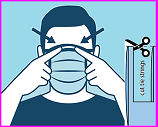 On April 3, U.S. health officials recommended an arts-and-crafts project to thwart the spread of coronavirus: Make a cloth face mask and wear it when you go out in public. Here are some tips and templates for turning T-shirts and other materials into DIY personal protective gear.
On April 3, U.S. health officials recommended an arts-and-crafts project to thwart the spread of coronavirus: Make a cloth face mask and wear it when you go out in public. Here are some tips and templates for turning T-shirts and other materials into DIY personal protective gear.
Read More
Filed under: Class Activities, Special Features, Web Resources | Comments Off on Face Mask Engineering
Tags: CDC, coronavirus, Covid-19 protective gear, Design, face mask, maker challenges, sewing, Web Resources
Posted on April 11th, 2020 by Mary Lord
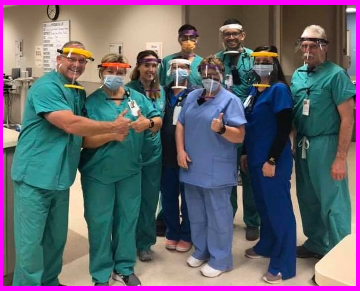 It seemed like a simple request. Lake Regional Hospital in Osage Beach, Mo., needed 150 face shields for those caring for coronavirus patients. Students at nearby Camdenton High School rushed to help – and soon began fielding requests from first responders and even U.S. troops in Afghanistan. Their supply source: 3-D printers the nearby middle school had received as part of a University of Missouri program to improve STEM education.
It seemed like a simple request. Lake Regional Hospital in Osage Beach, Mo., needed 150 face shields for those caring for coronavirus patients. Students at nearby Camdenton High School rushed to help – and soon began fielding requests from first responders and even U.S. troops in Afghanistan. Their supply source: 3-D printers the nearby middle school had received as part of a University of Missouri program to improve STEM education.
Read More
Filed under: K-12 Education News, K-12 Outreach Programs, Special Features | Comments Off on High School Students Engineer Covid-19 Gear
Tags: 3-D printing, Biomedical Engineering, coronavirus, Covid-19 protective gear, Curriculum, middle school technology integration, STEM education, University of Missouri College of Education eMINTS program
Posted on April 11th, 2020 by Mary Lord
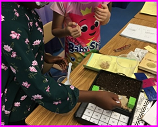 With schools closed during the Covid-19 pandemic, ASEE members and other engineering and technology educators are posting daily design challenges, hosting teacher meetups, and creating ways to engage students in STEM learning at home.
With schools closed during the Covid-19 pandemic, ASEE members and other engineering and technology educators are posting daily design challenges, hosting teacher meetups, and creating ways to engage students in STEM learning at home.
Read More
Filed under: Class Activities, Grades 6-8, Grades 6-8, Grades 9-12, Grades 9-12, Grades K-5, Grades K-5, K-12 Outreach Programs, Lesson Plans, Special Features, Web Resources | Comments Off on STEM @ Home Resources
Tags: American Society for Engineering Education, Class Activities, COVID-19, Curriculum, digital libraries, distance education, home schooling, Internet Resources, Lesson Plans, remote instruction, Resources for Teachers, STEM education, Web Resources
Posted on April 6th, 2020 by Mary Lord
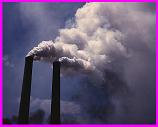 Middle school students measure how much dust, pollen, and other particulate matter is present in the air around them by placing “pollution detectors” in various locations and then examining the captured air particles to determine which places have more or fewer airborne particles. In a companion activity, they engineer methods of removing contaminants.
Middle school students measure how much dust, pollen, and other particulate matter is present in the air around them by placing “pollution detectors” in various locations and then examining the captured air particles to determine which places have more or fewer airborne particles. In a companion activity, they engineer methods of removing contaminants.
Read More
Filed under: Class Activities, Grades 6-8, Grades 6-8, Lesson Plans | Comments Off on I Breathe WHAT?!
Tags: air pollution, data, Environmental Engineering, investigation, measurement, NGSS aligned, pollen
 As storms increase in frequency and fury and droughts drain groundwater and invite wildfires, communities nationwide are taking a hard look at whether their infrastructure, building codes, and businesses are up to the challenge. And they are turning to engineers for solutions that will increase resiliency and mitigate disaster.
As storms increase in frequency and fury and droughts drain groundwater and invite wildfires, communities nationwide are taking a hard look at whether their infrastructure, building codes, and businesses are up to the challenge. And they are turning to engineers for solutions that will increase resiliency and mitigate disaster.








 On April 3, U.S. health officials recommended an arts-and-crafts project to thwart the spread of coronavirus: Make a cloth face mask and wear it when you go out in public. Here are some tips and templates for turning T-shirts and other materials into DIY personal protective gear.
On April 3, U.S. health officials recommended an arts-and-crafts project to thwart the spread of coronavirus: Make a cloth face mask and wear it when you go out in public. Here are some tips and templates for turning T-shirts and other materials into DIY personal protective gear. It seemed like a simple request. Lake Regional Hospital in Osage Beach, Mo., needed 150 face shields for those caring for coronavirus patients. Students at nearby Camdenton High School rushed to help – and soon began fielding requests from first responders and even U.S. troops in Afghanistan. Their supply source: 3-D printers the nearby middle school had received as part of a University of Missouri program to improve STEM education.
It seemed like a simple request. Lake Regional Hospital in Osage Beach, Mo., needed 150 face shields for those caring for coronavirus patients. Students at nearby Camdenton High School rushed to help – and soon began fielding requests from first responders and even U.S. troops in Afghanistan. Their supply source: 3-D printers the nearby middle school had received as part of a University of Missouri program to improve STEM education.  With schools closed during the Covid-19 pandemic, ASEE members and other engineering and technology educators are posting daily design challenges, hosting teacher meetups, and creating ways to engage students in STEM learning at home.
With schools closed during the Covid-19 pandemic, ASEE members and other engineering and technology educators are posting daily design challenges, hosting teacher meetups, and creating ways to engage students in STEM learning at home. Middle school students measure how much dust, pollen, and other particulate matter is present in the air around them by placing “pollution detectors” in various locations and then examining the captured air particles to determine which places have more or fewer airborne particles. In a companion activity, they engineer methods of removing contaminants.
Middle school students measure how much dust, pollen, and other particulate matter is present in the air around them by placing “pollution detectors” in various locations and then examining the captured air particles to determine which places have more or fewer airborne particles. In a companion activity, they engineer methods of removing contaminants.